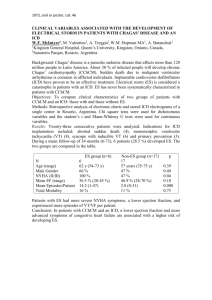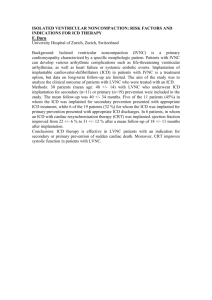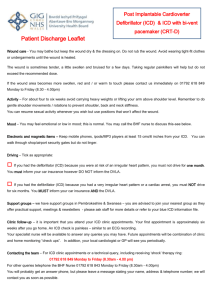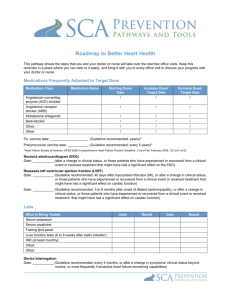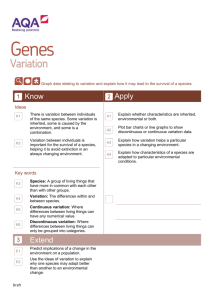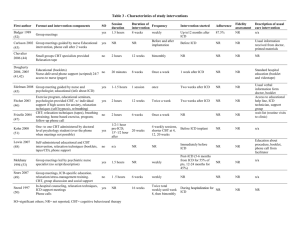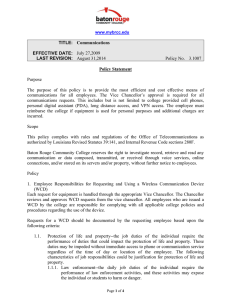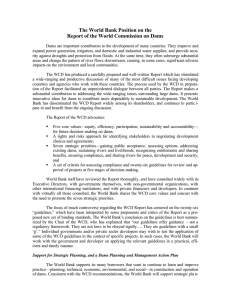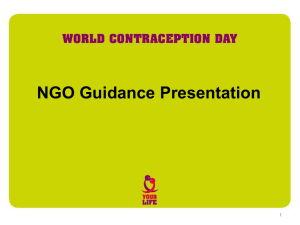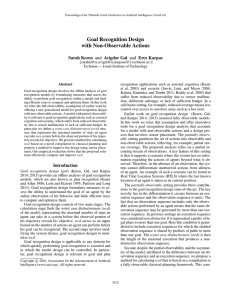Presentation Slides
advertisement
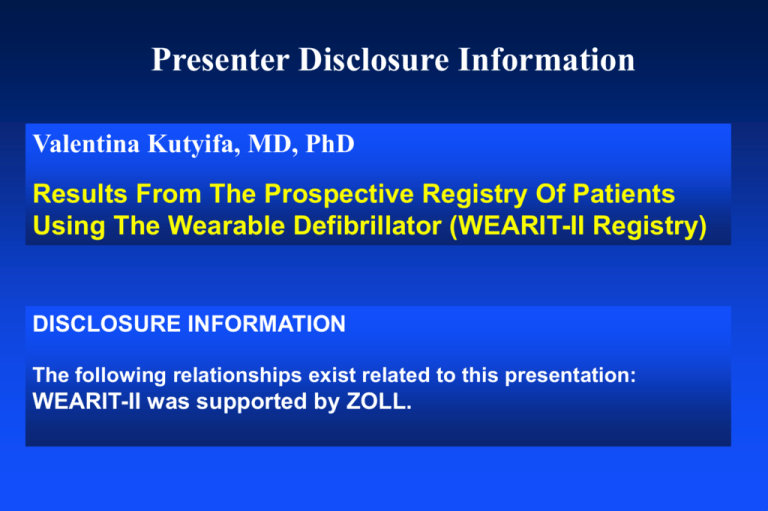
Presenter Disclosure Information Valentina Kutyifa, MD, PhD Results From The Prospective Registry Of Patients Using The Wearable Defibrillator (WEARIT-II Registry) DISCLOSURE INFORMATION The following relationships exist related to this presentation: WEARIT-II was supported by ZOLL. Results From The Prospective Registry Of Patients Using The Wearable Defibrillator (WEARIT-II Registry) Valentina, Kutyifa, MD, PhD, Ilan Goldenberg, MD, Wojciech Zareba, MD, PhD, Helmut Klein, MD, Chingping Wan, MD, Bonnie MacKecknie, Mark L. Andrews, MS, Steve Szymkiewicz, MD and Arthur J. Moss, MD From the Cardiology Division of the Department of Medicine (VK, IG, WZ, HK, BM, MLA, AJM), University of Rochester Medical Center, Rochester, N.Y.; Sheba Medical Center and Tel Aviv University, Israel (IG); and ZOLL, Pittsburgh, PA (SS, CW) BACKGROUND: CURRENT GUIDELINES FOR PRIMARY ICD THERAPY • EF ≤ 35% Hazard Ratio • High-risk inherited arrhythmias N=1016 0.52 AVID 1997 2000 Aborted cardiac arrest 0.77 N=659 CIDS Aborted cardiac arrest 0.80 2000 AHA/ACC/HRS 2012 Guidelines N=288 0.64 CASH Aborted cardiac arrest 0.4 0.6 0.8 ICD Better 1.0 1.2 1.4 1.6 1.8 Conventional Rx Better BACKGROUND: NEED FOR IMPROVED SELECTION OF PATIENTS FOR PRIMARY ICD THERAPY MADIT-II: Only one third of pts received appropriate ICD therapy over 4 years of FU Moss et al. NEJM 2002 MADIT-RIT: ICD programing to <200 bpm is associated with increased risk for inappropriate Rx and mortality Rate of appropriate ICD shocks was only 4% (event rate: 3 appr. ICD shocks per 100 pt-yrs) Moss et al. NEJM 2012 LIFEVEST WEARABLE CARDIOVERTER DEFIBRILLATOR (WCD) Can be used to bridge a decision for appropriate ICD therapy in: Post-MI pts Following coronary revascularization New onset dilated (non-ischemic) CMP High risk patients until stabilization Inherited arrhythmic or congenital disorders Availability of response button can be used to reduce inappropriate Rx STUDY PURPOSE To provide prospective data on the safety and efficacy of a bridging strategy with the WCD in a real world setting WEARIT-II: REGISTRY DESIGN WCD (LifeVest) prescription in the US Informed consent Acquisition of baseline clinical data Wearing time: 3 months Clinical and Arrhythmic event acquisition WCD return: end of use evaluation 12 month FU STUDY POPULATION N= 2000 patients enrolled in the US Currently enrolling patients in Europe, Israel Study duration: August 2011 – December 2013 Data management: University of Rochester Ischemic cardiomyopathy Non-ischemic CMP Cong/inherited 805 pts, 40.3% 927 pts, 46.4% 268 pts, 13.4% CONGENITAL, INHERITED HEART DISEASE Initial diagnosis at baseline (n=268, 13.4%) * Allows for multiple diagnoses. CHARACTERISTICS OF PATIENTS All Patients N=2000 Ischemic N=805 Non-ischemic N=927 Cong/Inherited N=268 62 65 59† 59* Female 30% 23% 36%† 30%* EF (median) 25% 30% 25% † 25% * HF symptoms 52% 48% 52% 63%* Diabetes 28% 35% 21%† 30%* Prior ACA 9% 11% 7%† 7% Age, yrs (median) * p-value < 0.05 ischemic, non-ischemic, cong/inherited, † p-value < 0.05 ischemic, non-ischemic Data are reported by patients using a baseline evaluation form. ARRHYTHMIC EVENTS: TOTAL POPULATION (WEAR DAYS MEDIAN 90 days) Patients (%) Events (events/pt) Event Rate Per 100 PtYear Any VT/VF * 41 (2.1%) 120 (2.9) 22 NSVT 28 (1.4%) 164 (5.9) 30 Atrial arrhythmias/SVT 72 (3.6%) 561 (7.8) 121 Asystole 6 (0.3%) 9 (1.5) 2 *Treated VT/VF and those VT’s that were spontaneously terminated, response button use or extended detection time. ARRHYTHMIC EVENTS: WEARIT-II VS. MADIT-RIT WEARIT-II MADIT-RIT Arms B&C ANY VT/VF BY DISEASE ETIOLOGY SAFETY END POINTS TYPE TOTAL N=2000 Inappropriate Rx, n (%) 10 (0.5%) Death, n (%) with the WCD 3 (0.2%)* * WCD detected asystole at the time of death No death related to unsuccessful termination of VT/VF 12-m FU data on death are still being collected COMPLIANCE Daily wear hours: median 22.5 hours COMPLIANCE BY DISEASE ETIOLOGY END OF USE BY ETIOLOGY DETECTED WCD ARRHYTHMIAS AND END OF USE DECISION CONCLUSIONS In a real world setting a management strategy that incorporates the WCD can be safely used to bridge a decision for appropriate ICD therapy in patients with acquired, inherited, and congenital, heart disease: Safe termination of life-threatening arrhythmic events Low rate of inappropriate therapies Risk assessment tool to identify patients at higher risk for SCD who need subsequent ICD implantation Thank You
